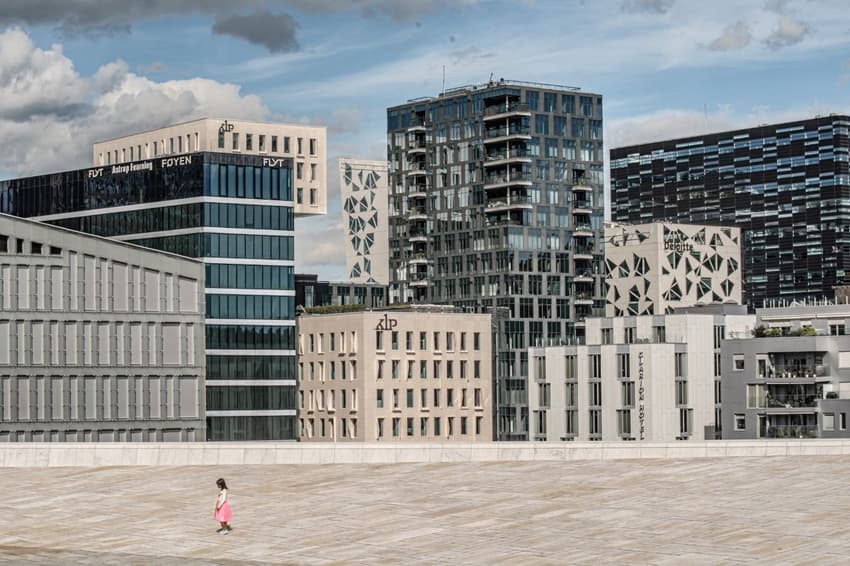Why Norway’s interest rates are likely to peak soon

There have been 12 interest rate hikes since 2021 in Norway, with another expected in September. National data agency Statistics Norway has said the next raise will likely signal the peak.
Norway’s key policy rate has been raised from the historic low of zero all the way up to four percent by Norway’s central bank, Norges Bank, since 2021.
The bank will likely raise its rates again in September. The bank outlined its intent to do so following a rate hike in August.
National data agency Statistics Norway believes the rate increase in September will signal an interest rate peak in Norway.
“The interest rate peak is close. The key interest rate will most likely be raised by 0.25 percentage points to 4.25 percent in September. It will remain there for the rest of the year and most of next year,” Thomas von Brasch at Statistics Norway said to Norwegian newswire NTB.
He added that most people in Norway were currently dealing with an interest burden not seen in the country since the 1990s.
“Although the forecasts indicate that the interest rate peak is close, we are not completely over the edge. The interest burden on households is expected to increase. We have to go all the way back to the beginning of the 1990s to see a level as high as what we expect next year,” he said.
The central bank has been raising interest rates as a means to prevent the Norwegian economy from overheating and to try to curb inflation. Statistics
Norway believes that rates will peak as inflation is showing signs of levelling off.
“But the conditions that have contributed to the rise in prices here at home are about to reverse. Energy prices have fallen, and internationally, it appears that the peak of inflation has been reached, and price growth is on the way down. In addition, the devaluation of the krone has stopped and is about to reverse,” von Brasch said.
It is expected that inflation next year will fall to four percent from an estimated 5.8 percent this year.
Looking further ahead and at the bigger picture, von Brasch said that real wage growth would pick up in 2026. Overall, real wage growth in Norway has been marginal since 2015.
He added that a slowdown was expected in the housing market due to the effects of interest rates.
Comments
See Also
Norway’s key policy rate has been raised from the historic low of zero all the way up to four percent by Norway’s central bank, Norges Bank, since 2021.
The bank will likely raise its rates again in September. The bank outlined its intent to do so following a rate hike in August.
National data agency Statistics Norway believes the rate increase in September will signal an interest rate peak in Norway.
“The interest rate peak is close. The key interest rate will most likely be raised by 0.25 percentage points to 4.25 percent in September. It will remain there for the rest of the year and most of next year,” Thomas von Brasch at Statistics Norway said to Norwegian newswire NTB.
He added that most people in Norway were currently dealing with an interest burden not seen in the country since the 1990s.
“Although the forecasts indicate that the interest rate peak is close, we are not completely over the edge. The interest burden on households is expected to increase. We have to go all the way back to the beginning of the 1990s to see a level as high as what we expect next year,” he said.
The central bank has been raising interest rates as a means to prevent the Norwegian economy from overheating and to try to curb inflation. Statistics
Norway believes that rates will peak as inflation is showing signs of levelling off.
“But the conditions that have contributed to the rise in prices here at home are about to reverse. Energy prices have fallen, and internationally, it appears that the peak of inflation has been reached, and price growth is on the way down. In addition, the devaluation of the krone has stopped and is about to reverse,” von Brasch said.
It is expected that inflation next year will fall to four percent from an estimated 5.8 percent this year.
Looking further ahead and at the bigger picture, von Brasch said that real wage growth would pick up in 2026. Overall, real wage growth in Norway has been marginal since 2015.
He added that a slowdown was expected in the housing market due to the effects of interest rates.
Join the conversation in our comments section below. Share your own views and experience and if you have a question or suggestion for our journalists then email us at [email protected].
Please keep comments civil, constructive and on topic – and make sure to read our terms of use before getting involved.
Please log in here to leave a comment.